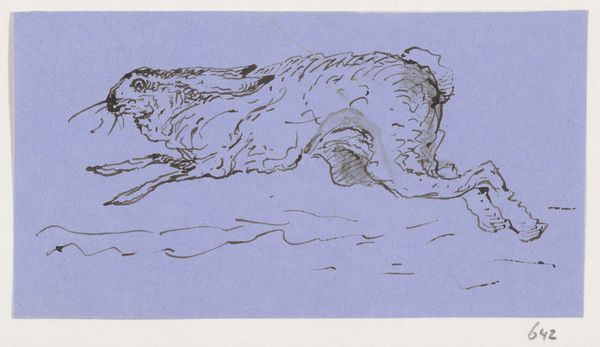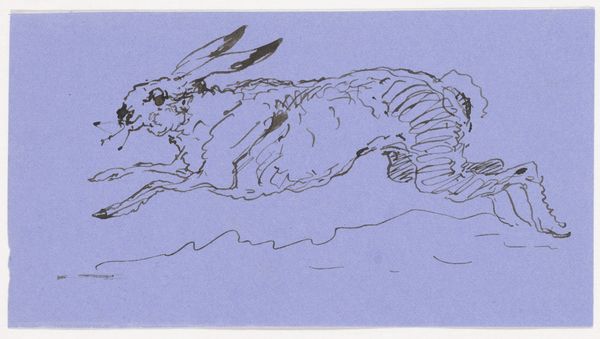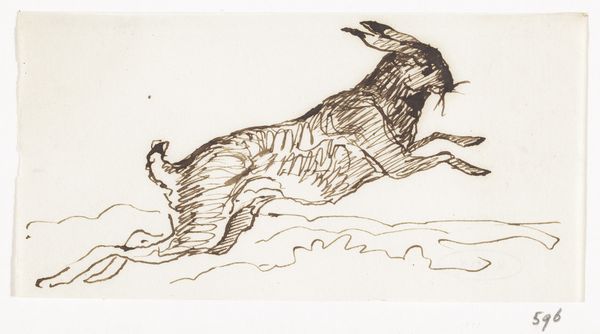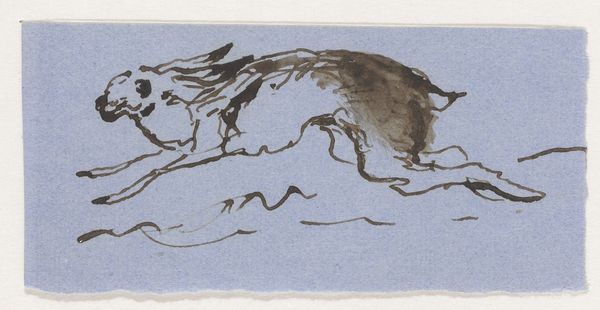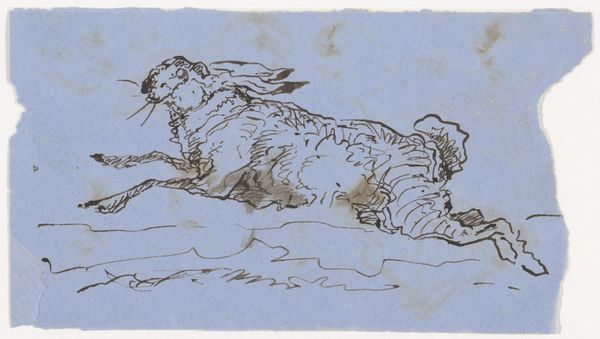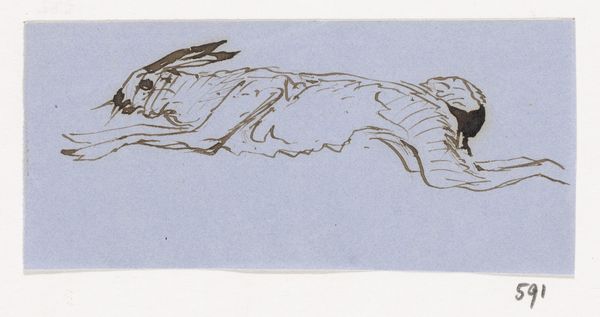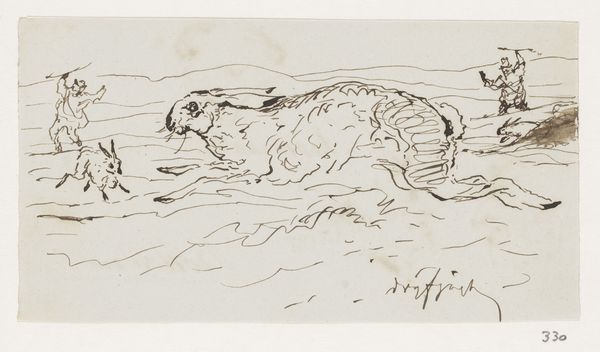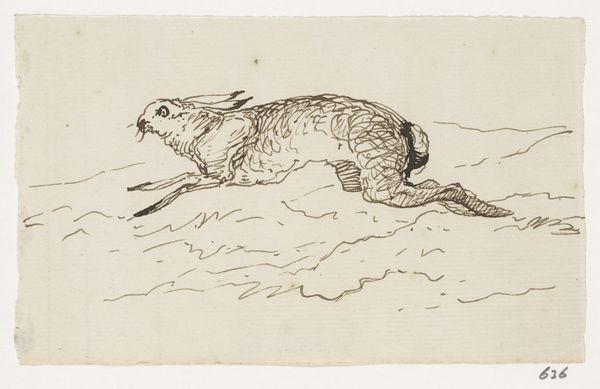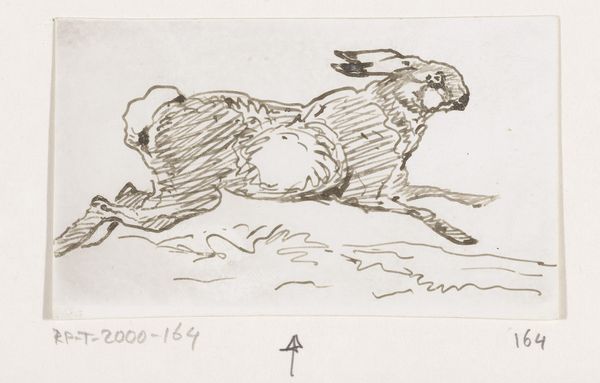
drawing, ink, pen
#
drawing
#
animal
#
pen sketch
#
ink
#
pen
#
realism
Dimensions: height 70 mm, width 133 mm
Copyright: Rijks Museum: Open Domain
Curator: At first glance, this piece feels wonderfully frenetic, almost urgent, doesn’t it? Editor: Indeed. Here we have "Haas," a drawing by Johannes Tavenraat, made sometime between 1840 and 1880. Executed with pen and ink, it's a small study currently residing here at the Rijksmuseum. Its hurried lines give the sense of a fleeting observation. Curator: A fleeting observation indeed! It makes me think of those stolen moments when you're hiking, and some creature explodes out of the undergrowth – all pure instinct. He's captured the animal’s desperation, perhaps? Editor: I appreciate your reading of "desperation." But if we break it down, observe how Tavenraat uses a kind of visual shorthand. The density of the hatching on the hare’s rear emphasizes volume, drawing the eye and establishing a focal point. Curator: See, I'm drawn more to the hare's head—the detail around the eye. It has this panicked alertness to it. All it would need is someone to shine a light. Editor: Semiotically speaking, the scratchy ground plane is also significant. It implies a certain level of activity but remains, essentially, undifferentiated space. This pushes the subject forward and prevents narrative context. Curator: You see precision; I see the echo of experience. Remember that feeling? You spot it. Sketch it before it vanishes back into its world. It’s not about flawless detail; it’s about capturing something true in a burst of creativity. Editor: I find that both of our approaches ultimately serve to deepen one's appreciation of the hare’s form—but that may not be the intention here. Curator: Maybe the deepest truths exist precisely when an intention blooms naturally from that wild spark, hm? Editor: Perhaps. In either case, I think it rewards the attentive eye.
Comments
No comments
Be the first to comment and join the conversation on the ultimate creative platform.

